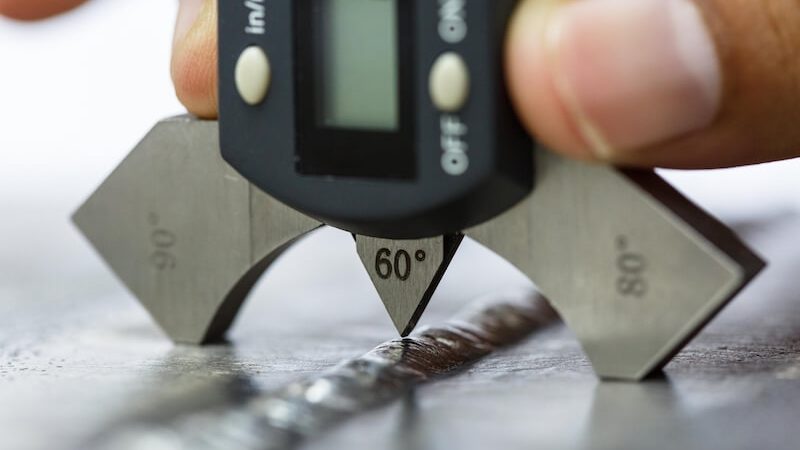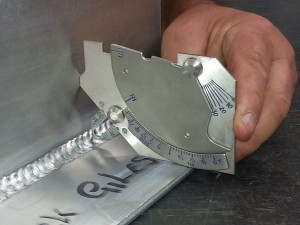Professional Welding Inspection Milwaukee Services for Quality Assurance
Wiki Article
How Welding Inspection Adds to Longevity and Reliability in Fabrication Jobs
Welding examination serves as a fundamental aspect in making sure the longevity and integrity of manufacture projects. By systematically recognizing possible problems throughout various phases of production, welding examinations not only protect against costly failings but likewise foster a society of top quality assurance within the group.
Value of Welding Evaluation
Guaranteeing top quality with welding evaluation is a critical element of any manufacture task. It works as a guard to confirm that welding processes fulfill well established standards and requirements, therefore enhancing the total integrity of the structure or component being produced. Welding assessment is not simply a procedural action; it is an essential technique that assists determine prospective issues early, making sure that they are attended to before they escalate into considerable issues.The significance of welding inspection can be underscored by its role in preserving safety and resilience. Welded joints are typically based on extreme problems, and any type of problems can jeopardize the efficiency and durability of the end product. By applying rigorous examination procedures, organizations can guarantee conformity with market guidelines, thus lessening risks related to structural failings.
Additionally, efficient welding inspection cultivates confidence amongst stakeholders, including customers and governing bodies, that the project meets the highest possible high quality criteria. This not only boosts the track record of the maker however also adds to long-lasting price savings by staying clear of rework and possible obligations. Inevitably, welding evaluation is indispensable to the success and dependability of fabrication jobs, strengthening the worth of quality control in engineering techniques.

Usual Welding Problems
Welding problems can dramatically undermine the structural honesty of produced parts, making their recognition and correction critical. Usual welding issues can be extensively classified into three kinds: geometric, metallurgical, and service-related.Geometric flaws consist of problems such as undercutting, where the base steel is eroded beside the weld, and excessive convexity, which can lead to tension concentration points. These defects can compromise the toughness and longevity of the weld joint.
Metallurgical problems occur from inappropriate welding procedures or materials, causing troubles such as porosity, where gas pockets create within the weld, and lack of fusion, which takes place when the weld metal stops working to bond correctly with the base steel. These problems can dramatically deteriorate the weld's efficiency.
Service-related problems might not emerge up until after the part is in usage. Examples consist of cracking because of thermal stress or exhaustion, which can result in devastating failings if not resolved.
Comprehending these usual issues equips fabricators to carry out effective assessment methods that enhance the dependability and long life of their projects, eventually making sure safety and performance requirements are fulfilled.
Evaluation Approaches and techniques
An extensive strategy to assessment techniques and methods is necessary for recognizing and mitigating welding flaws in manufacture projects. Various approaches are employed to make certain the integrity of welds, including visual inspection, ultrasonic testing (UT), radiographic testing (RT), magnetic bit screening (MT), and color penetrant testing (PT) Each technique has its staminas and particular applications.
Magnetic bit screening is useful for finding surface and near-surface flaws in ferromagnetic materials. By using a magnetic field and making use of ferrous particles, assessors can identify interruptions successfully. Lastly, color penetrant screening highlights surface-breaking problems through the application of a dye that permeates into fractures, making them noticeable under ultraviolet light.
Using a mix of these methods ensures a strenuous analysis, enhancing the reliability of welded frameworks.
Impact on Project Longevity
Efficient assessment methods substantially affect the durability of fabrication tasks. By recognizing prospective problems and disparities in welding processes, evaluations guarantee that structures are constructed to stand up to operational tensions in time. When welds are thoroughly checked out, the probability of undiscovered concerns, link which can result in architectural failings, is reduced.Regular assessments assist in adherence to industry standards and regulations, which are essential for making sure the sturdiness of welded joints. Such conformity not only enhances the honesty of the project yet likewise reassures stakeholders regarding the high Full Article quality of the job. Moreover, prompt discovery of defects permits restorative actions to be taken early, stopping pricey fixings or complete overhauls down the line.
Furthermore, reliable examination practices cultivate a culture of quality control within manufacture teams. They are more likely to stick to best practices and maintain high requirements throughout the manufacturing procedure when workers are aware that their work will be rigorously assessed. Inevitably, this commitment to quality not only prolongs the life expectancy of the project however also lowers maintenance prices, thereby boosting the total economic practicality of fabrication ventures.
Enhancing Dependability in Fabrication
Dependability in manufacture is dramatically enhanced with extensive examination procedures that resolve potential weaknesses in welding techniques. Effective welding inspection not only recognizes problems early yet additionally offers vital comments to welders, making sure adherence to developed specifications and criteria. By making use of non-destructive screening approaches, such as radiographic or ultrasonic assessments, producers can determine the honesty of welds without compromising the material.Moreover, regular inspections promote a culture of high quality and accountability amongst manufacture teams. When welders understand that their job is subject to strict examinations, they are more probable to follow finest procedures and methods. This positive strategy lessens the danger of costly failures throughout the operational phase of a job.
Ultimately, boosting integrity in manufacture via extensive assessment processes not just enhances the lifespan of the made elements but additionally enhances stakeholder self-confidence in the project's general top quality and durability. Investing in robust welding evaluation methods is necessary for achieving long-lasting reliability in any kind of fabrication undertaking.
Conclusion
In summary, welding inspection offers as a vital part in ensuring the durability and reliability of fabrication projects. By identifying flaws early and utilizing non-destructive screening techniques, assessments foster a culture of high quality assurance that abides by sector standards. The methodical documents of results not only promotes fad evaluation however also improves liability and architectural integrity. Inevitably, reliable welding assessment techniques reinforce stakeholder self-confidence and substantially add to the financial stability of construction ventures.Welding examination serves as a foundational aspect in ensuring the long life and reliability of manufacture projects.Making sure quality via welding assessment is a crucial part of any type of construction project. Inevitably, welding assessment is indispensable to the success and dependability of fabrication projects, strengthening the worth of quality guarantee in design techniques.
An extensive strategy to evaluation strategies and approaches is essential for determining and mitigating welding problems in fabrication projects.In summary, welding inspection serves as a crucial component in ensuring the long life and integrity of manufacture tasks.
Report this wiki page